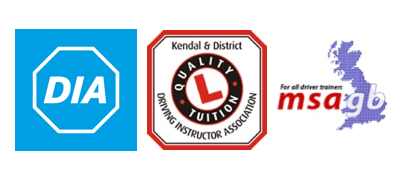The most common faults made during driving tests between 4 December 2017 and 3 December 2018 were:
1. Junctions – observation.
You’ll be marked with this fault for not taking effective observation before emerging at junctions and emerging into the path of other vehicles. Always make sure it’s safe before proceeding.
2. Mirrors – change direction.
Remember that you need to use your rear-view mirror and wing mirrors – and react to the information they’re giving you! People get caught out for changing direction and pulling up with no mirror checks, increasing their speed with no mirror checks, or using their mirrors too late.
3. Control – steering.
You need to be able to maintain a steady course in normal driving. Things like mounting and dismounting the kerb, and not following the contour of the kerb results in faults in this area.
4. Junctions – turning right.
When you’re turning right, position your vehicle correctly – it shouldn’t cut the corner when turning right. Also, watch out for cyclists and motorcyclists, and any pedestrians crossing the road.
5. Move off – safely.
Using your mirrors to check for other road users is essential. It’ll be marked as a fault if you attempt to move off without doing so.
6. Response to signs – traffic lights.
Giving the right response to traffic lights is something that catches people out. Some of the mistakes that people make include waiting at a green filter light when it’s safe to proceed and staying at the stop line when it’s safe to move. Other faults that count include not conforming to a red light and stopping beyond an advanced stop line in the area designated for cyclists.
7. Move off – control.
Repeated stalling is one of the things that counts as control when moving off. Other things that are included in this reason are moving off (or trying to!) with the handbrake on, rolling backwards when trying to move off – and not putting the car in gear and attempting to move off.
8. Positioning – normal driving.
Your vehicle should be positioned correctly for the route you’re taking. If lanes are marked, make sure you’re in the middle of the lane. Avoid straddling lanes.
9. Response to signs – road markings.
You’ll be marked with faults in this area for doing things like unnecessarily crossing the solid white centre lines on the road, and not following directional arrows. Stopping in a yellow box junction when the exit is not clear also counts for this reason. So, make sure you know the rules about using them.
10. Reverse park – control.
In the driving test, you can be asked to either do a parallel park on the road or reverse into a parking bay at the test centre.
You’ll get a fault in this area if you need to reposition to correct a loss of control or accuracy. A complete misjudgement or significant loss of control will count as a serious fault.
Prepare to pass
It’s normal to be nervous before your test, but if you’re properly prepared then there’s really no reason to worry. On average, people who pass the test have had 45 hours of driving lessons and 22 hours of private practice. Your examiner’s not trying to catch you out; they just want to make sure that you can drive safely.





